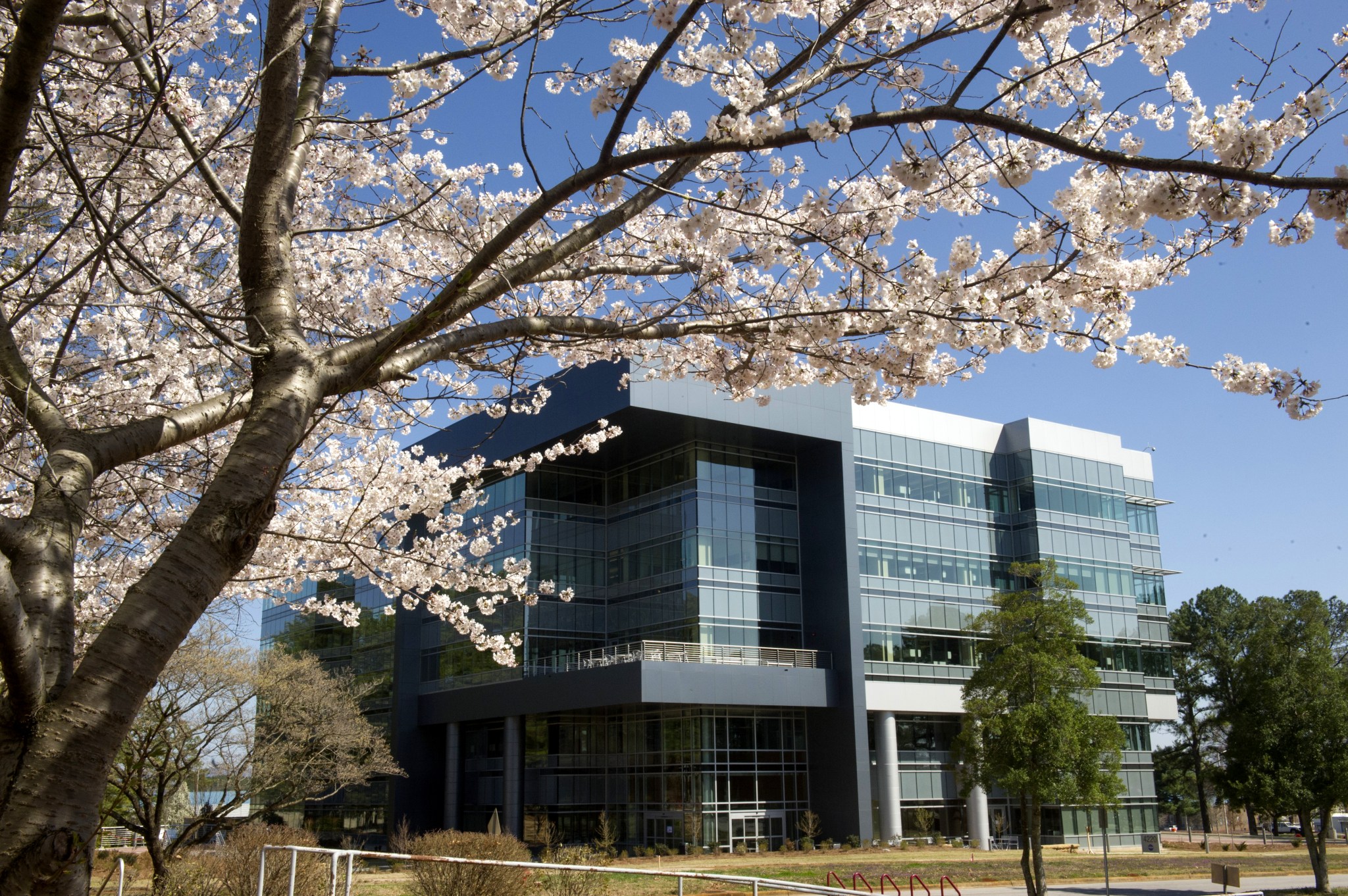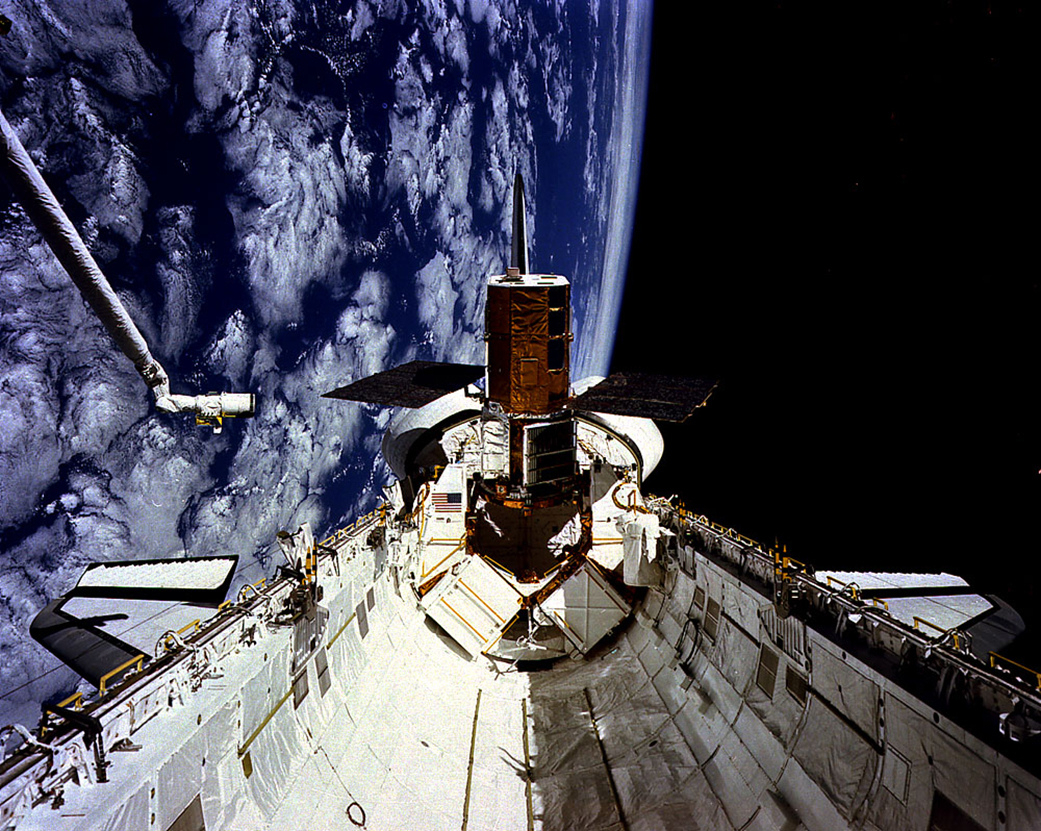RS-25 Rocket Engines Return to Launch NASA’s Artemis Moon Missions
By Ramon Osorio
The rocket engine with one of the most storied histories in spaceflight, the RS-25, is returning to space for a second act – this time to send humans on the Artemis missions to explore the Moon.
As the space shuttle main engine, the RS-25 has a proven record of launching 135 missions spanning over three decades. At the end of the shuttle program in 2011, 16 RS-25 engines that helped build the International Space Station and deploy the Hubble Space Telescope, among other achievements, were stored away.
When NASA began scouting engines to power America’s next super heavy-lift rocket, the Space Launch System, the RS-25 offered an opportunity to forgo costs of developing a new engine, and the ability to leverage the assets, capabilities, and experience of the Space Shuttle Program.
“It is one of the most reliable, efficient, high-performance engines ever built and was way ahead of its time when considering design, engineering, and performance,” said Johnny Heflin, manager of the SLS Liquid Engines Office at NASA’s Marshall Space Flight Center. “The fact that this engine has the versatility to launch the SLS is a testament to the professionals who first built it back in the 70s, as well as the incredible people that have continually improved it along its 30-plus year history.”
However, getting the engine to fly the new mega rocket was not a matter of “plug and play.” Engineers made several design improvements to ready the RS-25 for flight in the more demanding SLS environment.
Engineers Adapt the RS-25 for the SLS Rocket
In 2015, when NASA and Aerojet Rocketdyne began adapting the heritage engines, one of the first parts they redesigned was the obsolete flight controllers. Often referred to as the brain of the engine, because of its role to actively control engine operation and manage command and data protocols between the engine and spacecraft, the RS-25 needed a supercomputer capable of handling the modern SLS algorithms.
Just changing the engine’s control systems wasn’t enough to prepare this engine to operate the most powerful rocket ever built. The SLS architecture was different from that of its shuttle predecessor, and engineers adapted the RS-25 engine for its new role.
The space shuttle afforded three RS-25s the comfort of riding farther away from the main solid rocket booster during flight, which created less extreme thermal conditions. With the SLS design, four engines sit at the base of the rocket’s core stage, directly next to the two solid rocket boosters. In this scenario, the RS-25 engine nozzles take on extreme base heating, especially during the first two minutes of flight when the booster fuel is burned.
“Those engine nozzles are getting blasted by the extreme heat exiting the two solid rocket boosters,” said Philip Benefield, team lead for engines systems and requirements. “It’s as if the engines are flying next to two giant heat lamps during its ascent.”
The engine nozzles absorb additional heat during booster separation because of the thrusters firing upon it to detach the booster from the SLS core stage. This was addressed by adding insulation to the engine nozzle, which Benefield described as one of the key improvements.
Another difference is a result of where the liquid oxygen tank sits in relation to the four RS-25 engines at the base of the rocket’s core stage. As the upper-most tank of the 212-foot-core stage, this tall column of dense liquid oxygen propellant results in high pressure at the RS-25 inlets.
“These inlets experience double the pressure of that of the shuttle configuration,” Benefield said. “We had to assess whether or not these parts could handle that kind of load, then certify them to operational safety standards. With minimal upgrades, the engine met certification requirements. It truly demonstrates the engine’s advanced design and reliability.”
As of April 2019, acceptance testing of all 16 former space shuttle main engines was complete. With enough engines to cover the first four Artemis missions, the newly revived RS-25 can operate at 109% of its operational thrust level, a 5% gain from the end of the shuttle program.
The RS-25 Sees a Bright Future
By the end of the Space Shuttle Program, Aerojet Rocketdyne was no longer producing engines.
In 2015, NASA funded Aerojet Rocketdyne to restart the production of six new engines and then modified the agreement by adding 18 additional engines to the order. The newer RS-25s produce 111% operational thrust levels and incorporate advanced manufacturing methods, such as 3D printing, hot isostatic pressure bonding, five-axis milling machines, and digital X-rays, reducing the cost to build the new engines by 30% from the original shuttle engines.
“It wasn’t just a matter of making the RS-25 more powerful, we weren’t trying to take something amazing and make it more amazing,” Heflin said. “We wanted to attain the same remarkable aspects while making it significantly less costly to build.”
Adding to manufacturing improvements, Aerojet Rocketdyne recently redesigned the engine nozzle jacket that will be assembled from four large metal cones, as opposed to the previous design that came in 37 separate pieces.
“That single manufacturing change reduces nozzle cost by over 20%,” Heflin said. “So, we are laying the foundation for the future by reducing manufacturing costs and building the same high-performance engine in less time.”
During a recent Green Run test at NASA’s Stennis Space Center, all four RS-25 engines of the Artemis I core stage completed a full-duration eight-minute hot fire and produced 1.6 million pounds of thrust, as they will to launch the Artemis I mission. The next time the four engines fire will be during the rocket’s debut flight to the Moon.
The Artemis program is the next step in human space exploration and the major component of NASA’s broader Moon to Mars exploration approach, which will establish sustainable exploration of the Moon and prepare for humanity’s next giant leap: sending astronauts to Mars.
Osorio is a public affairs officer in Marshall’s Office of Strategic Analysis & Communications.
Charla Pledger Recognized as HEO HErO
Charla Pledger is the latest team member from NASA’s Marshall Space Flight Center to be named a HEO HErO. Pledger successfully evaluated and negotiated a surge of 27 end-of-year procurements prior to the end of the 2020 government fiscal year. Each week, NASA’s Human Exploration and Operations Mission Directorate recognizes HEO HErOes, team members from across the agency who have made vital contributions in their support of NASA’s mission to land the first woman and next man on the Moon by 2024. (NASA)
Chandra Discovers First X-rays from Uranus
Astronomers have detected X-rays from Uranus for the first time, using NASA’s Chandra X-ray Observatory. This result may help scientists learn more about this enigmatic ice giant planet in Earth’s solar system.
Uranus is the seventh planet from the Sun and has two sets of rings around its equator. The planet, which has four times the diameter of Earth, rotates on its side, making it different from all other planets in the solar system. Since Voyager 2 was the only spacecraft to ever fly by Uranus, astronomers currently rely on telescopes much closer to Earth, like Chandra and the Hubble Space Telescope, to learn about this distant and cold planet that is made up almost entirely of hydrogen and helium.
In the new study, researchers used Chandra observations taken in Uranus in 2002 and 2017. They saw a clear detection of X-rays from the first observation, just analyzed recently, and a possible flare of X-rays in those obtained 15 years later.
What could cause Uranus to emit X-rays? Mainly the Sun. Astronomers have observed that both Jupiter and Saturn scatter X-ray light given off by the Sun, similar to how Earth’s atmosphere scatters the Sun’s light. While the authors of the new Uranus study initially expected that most of the X-rays detected would also be from scattering, there are tantalizing hints that at least one other source of X-rays is present. If further observations confirm this, it could have intriguing implications for understanding Uranus.
One possibility is that the rings of Uranus are producing X-rays themselves, which is the case for Saturn’s rings. Uranus is surrounded by charged particles such as electrons and protons in its nearby space environment. If these energetic particles collide with the rings, they could cause the rings to glow in X-rays. Another possibility is that at least some of the X-rays come from auroras on Uranus, a phenomenon that has previously been observed on this planet at other wavelengths.
X-rays are emitted in Earth’s auroras, produced by energetic electrons after they travel down the planet’s magnetic field lines to its poles and are slowed down by the atmosphere. Jupiter has auroras, too. The X-rays from auroras on Jupiter come from two sources: electrons traveling down magnetic field lines, as on Earth, and positively charged atoms and molecules raining down at Jupiter’s polar regions. However, scientists are less certain about what causes auroras on Uranus. Chandra’s observations may help figure out this mystery.
Uranus is an especially interesting target for X-ray observations because of the unusual orientations of its spin axis and its magnetic field. While the rotation and magnetic field axes of the other planets of the solar system are almost perpendicular to the plane of their orbit, the rotation axis of Uranus is nearly parallel to its path around the Sun. Furthermore, while Uranus is tilted on its side, its magnetic field is tilted by a different amount, and offset from the planet’s center. This may cause its auroras to be unusually complex and variable. Determining the sources of the X-rays from Uranus could help astronomers better understand how more exotic objects in space, such as growing black holes and neutron stars, emit X-rays
A paper describing these results appears in the most recent issue of the Journal of Geophysical Research and is available online.
NASA’s Marshall Space Flight Center manages the Chandra program. The Smithsonian Astrophysical Observatory’s Chandra X-ray Center controls science from Cambridge Massachusetts and flight operations from Burlington, Massachusetts.
Read more from NASA’s Chandra X-ray Observatory here. For more Chandra images, multimedia, and related materials, visit here.
NASA, Marshall Libraries Celebrate National Library Week
As part of National Library Week, the NASA Library Network published the first issue of its new biannual newsletter. The theme for this year’s National Library Week is “Welcome to Your Library,” which promotes that libraries extend far beyond the four walls of a building. “While you cannot visit the Marshall Technical or Red Star libraries in person, the libraries are still open,” Marshall Technical Librarian Paula Laurita said. “They offer the opportunity to access research and educational content. Take time to connect with us to see all the libraries have to offer. You’ll also find some things just for fun, like the crossword puzzle in the newsletter or the word search at the Technical Library page.” Team members can contact Laurita or Red Star Librarian Melissa Roberts for more information about their respective libraries. (NASA)
Marshall Association Accepting Scholarship Applications
The Marshall Association is accepting applications for its 2021 scholarships. The association plans to award up to six scholarships to high school seniors or college freshman or sophomores pursuing, or intending to pursue, degrees in undergraduate studies in both technical and nontechnical fields. Applicants must be a dependent of a current Marshall Association member. Applications are due by 5 p.m. April 30. For eligibility details and application materials, visit here or contact Alexandra Dominguez. The Marshall Association is a professional employee service organization that includes Marshall civil servants, retirees, and contractors. In addition to the scholarship program, the group provides networking and community-building opportunities for members, and monthly speakers. Annual membership is $30, which supports the scholarship program and other events. Visit here to become a member. (NASA)
Marshall Hosts Earth Day Photo Contest
As “Green Team” organizers at NASA’s Marshall Space Flight Center prepare for Earth Day 2021 on April 22, they invite team members to raise environmental awareness by sharing original photographs that reflect this year’s theme, “Restore Our Earth – What Can YOU Do?”
Organized by Marshall’s Environmental Engineering and Occupational Health Office, the photo contest challenges team members to contribute images in two categories: color and black and white. Participants may enter up to two original images in each category. All images must be in digital JPG or PNG format, with at least 1-megabyte resolution, and must be accompanied with contact information and a short description of where each photo was taken. Photos must not be altered or digitally edited, though minor color correction, exposure correction, or removal of dust spots is permitted.
Photos taken on-site at Marshall must adhere to the center’s photography guidelines. For more information, see MPR 1600.1G Section 2.1.2.
Email entries individually to support services specialist Cecilia Culver at cecelia.culver@nasa.gov. Deadline for all entries is 5 p.m., April 9.
Winners will be selected by centerwide online voting, which opens April 15 and closes at midnight April 21. Winning photos will be announced April 22. All entries will be posted to the contest website on Inside Marshall.
For more information, contact Malene McElroy, sustainability lead engineer, at malene.a.mcelroy@nasa.gov.
New Office Building Near Gate 9 Will House Multiple Government Agencies
Redstone Arsenal, Redstone Gateway, and local government officials marked the opening of the Secured Gateway-100 building at Redstone Arsenal with a ribbon cutting March 21. The 250,000-square-foot building, part of the Redstone Gateway development, sits just beyond Gate 9 and will house multiple government agencies, including the Program Executive Office for Missiles and Space, FBI, and Army Corps of Engineers. Additional space remains open in the building to potentially house another government tenant. Redstone Gateway encompasses 468 acres around Gate 9 and includes office space, restaurants, a hotel, a daycare, and a conference center. (Redstone Rocket/Eric Schultz)
NASA’s Psyche Mission Reaches Milestone, Highlighted on ‘This Week @NASA’
NASA’s Psyche mission is featured in “This Week @NASA,” a weekly video program broadcast on NASA-TV and posted online.
The Solar Electric Propulsion Chassis for the Psyche spacecraft was recently delivered to the agency’s Jet Propulsion Laboratory, where the mission’s assembly, test, and launch operations phase is underway. The chassis, built by Maxar Technologies in Palo Alto, California, is the main body of the spacecraft that includes the 6 1/2-foot-wide high-gain antenna and the frame that will hold the mission’s science instruments.
Targeted for launch in August 2022, the Psyche mission will explore a metal-rich asteroid of the same name, located in the main asteroid belt between Mars and Jupiter. Studying the asteroid, which may be the core of an early planet, could provide valuable insight into how Earth and other planets formed.
Psyche is a project of the Science Mission Directorate’s Discovery Program, managed by NASA’s Marshall Space Flight Center.
View this and previous episodes at “This Week @NASA” on NASA’s YouTube page.
This Week in NASA History: STS-41C Launches – April 10, 1984
This week in 1984, space shuttle Challenger, mission STS-41C, launched from NASA’s Kennedy Space Center on the first direct ascent trajectory for a space shuttle. Here, the Solar Maximum Mission Satellite is housed in the orbiter’s cargo bay, demonstrating the capability of the shuttle to rendezvous, service, checkout, and deploy an in-orbit satellite. This was the first in-orbit spacecraft repair. The NASA History Program is responsible for generating, disseminating, and preserving NASA’s remarkable history and providing a comprehensive understanding of the institutional, cultural, social, political, economic, technological, and scientific aspects of NASA’s activities in aeronautics and space. For more pictures like this one and to connect to NASA’s history, visit the Marshall History Program’s webpage. (NASA)


































